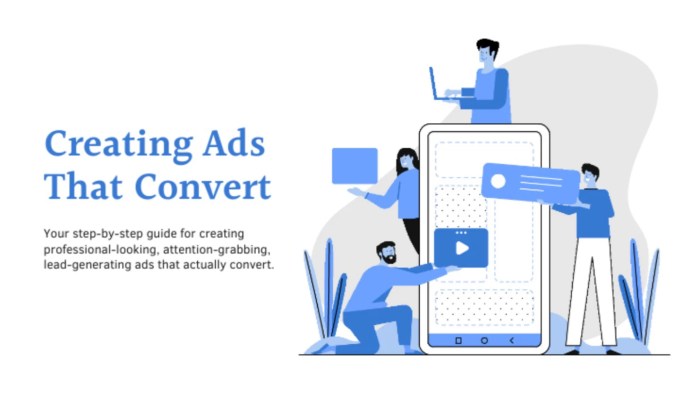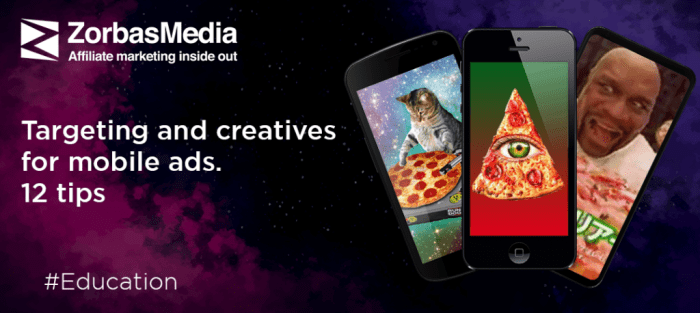Creating Mobile Ads That Convert sets the stage for crafting impactful mobile advertisements that drive results. Dive into the world of ad design and optimization with this comprehensive guide.
Understanding your audience, designing compelling content, utilizing effective CTAs, and optimizing performance are key elements explored in this narrative.
Understanding Your Target Audience
Knowing your target audience is crucial when creating mobile ads because it allows you to tailor your message effectively, increasing the chances of conversion. By understanding who your audience is, you can create ads that resonate with them, ultimately leading to higher engagement and ROI.
Demographic Factors to Consider for Targeting
- Age: Consider the age range of your target audience as different age groups may have varying interests and preferences.
- Gender: Understanding the gender of your audience can help you create ads that are more relevant and appealing to them.
- Location: Geographic location plays a role in targeting as cultural differences and local trends can impact the effectiveness of your ads.
- Income Level: Knowing the income level of your audience can help determine their purchasing power and the type of products or services they are likely to be interested in.
Influencing Ad Design with Audience Behavior, Creating Mobile Ads That Convert
Understanding audience behavior is key to designing mobile ads that convert. By analyzing how your target audience interacts with ads, you can optimize design elements such as color schemes, visuals, and call-to-action buttons to align with their preferences and habits. This insight can significantly impact the performance of your ads and increase the likelihood of conversion.
Designing Engaging Ad Content
In the world of mobile advertising, creating engaging ad content is crucial to capturing the attention of your target audience and driving conversions. Compelling visuals and copy play a significant role in attracting users and encouraging them to take action. Let’s delve into the key aspects of designing ad content that converts.
Significance of Compelling Visuals and Copy
When it comes to mobile ads, visuals are the first thing that catches the eye of users scrolling through their feeds. High-quality images or videos can instantly grab attention and create a lasting impression. Similarly, persuasive copy that delivers a clear message and resonates with the audience can compel users to click on the ad and learn more about your product or service.
Yo, if you’re looking to level up your money game and start investing, check out this dope guide on Investing for Beginners. It’s got all the lowdown on how to make your money work for you, straight up!
Best Practices for Creating Attention-Grabbing Headlines
Headlines are the gateway to your ad content. They need to be concise, relevant, and attention-grabbing to entice users to engage with your ad. Consider incorporating numbers, asking questions, or creating a sense of urgency to pique curiosity. A/B testing different headline variations can help you determine which ones perform best with your target audience.
Yo, check it out! If you’re looking to dip your toes into the world of finance, you gotta start somewhere, right? That’s why it’s key to learn about Investing for Beginners. This guide breaks it down for you, from stocks to bonds and everything in between. Get your money game on point and start building that wealth, fam!
Tips on Optimizing Ad Content for Mobile Viewing
With the majority of internet users accessing content on their mobile devices, it’s essential to optimize your ad content for mobile viewing. Ensure that your visuals are optimized for smaller screens and load quickly to prevent users from losing interest. Keep your copy concise and easy to read, avoiding long paragraphs that may deter mobile users from engaging with your ad.
Utilizing Call-to-Actions Effectively

In the world of mobile advertising, call-to-actions (CTAs) play a crucial role in driving conversions. These are the prompts that encourage users to take a specific action, such as downloading an app, making a purchase, or signing up for a newsletter. Without a strong CTA, users may simply scroll past your ad without engaging with it.
Importance of Strong CTAs
- CTAs should be clear, concise, and compelling to grab the user’s attention.
- Use action-oriented phrases like “Shop Now,” “Learn More,” or “Download Today” to prompt immediate action.
- Include a sense of urgency with phrases like “Limited Time Offer” or “Act Fast” to drive immediate responses.
Examples of Effective CTAs
- Buy Now: This CTA clearly tells users what action to take and creates a sense of urgency to make a purchase.
- Sign Up Today: Encourages users to take the next step and provides a clear direction for engagement.
- Get Started: Invites users to begin a process, making it easy for them to initiate an action.
Strategic Placement of CTAs
- Place CTAs where they can be easily seen without being obtrusive to the overall design of the ad.
- Consider placing CTAs at the beginning and end of the ad to capture attention right away and reinforce the message.
- Utilize contrasting colors or bold fonts to make the CTA stand out and attract users’ eyes.
Testing and Optimizing Ad Performance: Creating Mobile Ads That Convert

When it comes to mobile ad campaigns, A/B testing is crucial for determining what works best for your audience. By comparing two versions of an ad with minor differences, you can see which one performs better and optimize accordingly.
Key Metrics to Track
Tracking key metrics is essential to understanding how your ads are performing. Some important metrics to track include:
- Click-through Rate (CTR): This measures how many people clicked on your ad after seeing it.
- Conversion Rate: The percentage of users who completed a desired action, such as making a purchase, after clicking on the ad.
- Cost Per Acquisition (CPA): The average cost of acquiring a customer through the ad campaign.
- Return on Ad Spend (ROAS): The revenue generated for every dollar spent on the ad.
Optimizing Ads Based on Performance Data
Once you have collected data on key metrics, it’s essential to optimize your ads for better performance. Some strategies to consider include:
- Adjusting ad copy and visuals based on what resonates with your audience.
- Testing different calls-to-action to see which one drives more conversions.
- Targeting specific demographics or interests that have shown higher engagement.
- Optimizing ad delivery times to reach your audience when they are most active.
